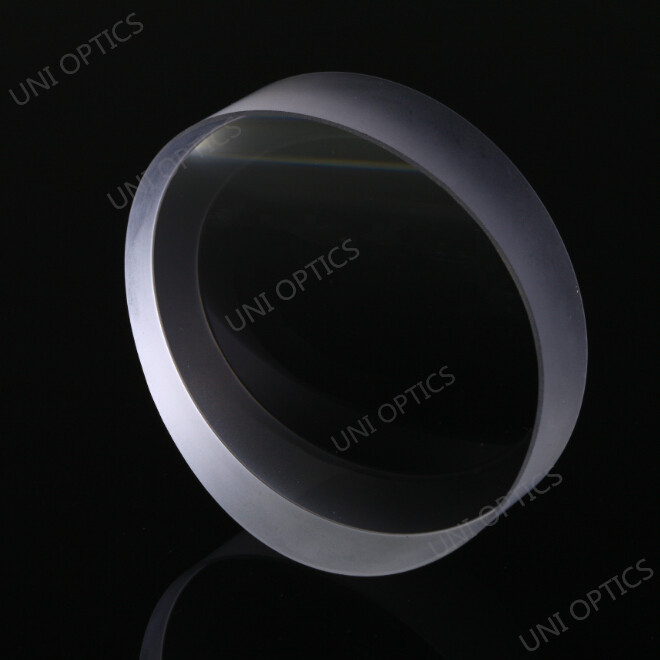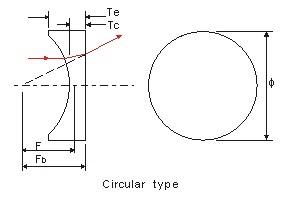平凹柱面镜为合成光束扩散及其广泛应用提供了单轴负成像。如果需要柱面镜凹面作为反射镜,这些透镜可用作镜坯。
产品产地:
中国航运港口:
中国福州交付周期:
四周付款:
银行电汇, 西联付款
Uni Optics平凹圆柱面镜在垂直方向上具有凹面曲率,在水平方向上无曲率。它们边缘呈圆形,因此在光学系统中很容易与其他元件结合。
1. 为什么使用柱面镜?
柱面镜通常用于聚焦、凝聚或扩展入射光。柱面镜有一个柱面,使光聚焦在一个尺寸或轴上。
2. 使用圆柱面镜可以纠正眼睛哪些缺陷?
用柱面镜可以矫正眼睛的散光缺陷。散光是由于晶状体曲率不均匀造成。


产品规格
材料:Schott、CDGM、Ohya、Ohara、Corning等。
直径公差:+0/-0.05mm
有效焦距公差:±2%
中心偏:≤3弧分
表面质量:40-20 s/d
表面平整度:n=5△n=0.5
通光孔径:>90%
镀膜:可选泽性(无镀膜/单层MGF2镀膜/宽带AR镀膜)
| Part NO. | Material | F(mm) | Φ(mm) | R(mm) | Tc(mm) | Te(mm) | Fb(mm) |
|---|---|---|---|---|---|---|---|
| ULYRPV008005 | BK7 | -8 | 5 | -4.13 | 2 | 2.84 | -9.34 |
| ULYRPV092008 | BK7 | -9.2 | 8 | -4.74 | 2 | 4.2 | -10.53 |
| ULYRPV010008 | BK7 | -10 | 8 | -5.16 | 2 | 3.89 | -11.31 |
| ULYRPV125127 | BK7 | -12.5 | 12.7 | -6.43 | 2 | 7.44 | -13.8 |
| ULYRPV025127 | BK7 | -25 | 12.7 | -12.89 | 2 | 3.67 | -26.33 |
| ULYRPV050127 | BK7 | -50 | 12.7 | -25.76 | 2 | 2.8 | -51.33 |
| ULYRPV075254 | BK7 | -75 | 25.4 | -38.64 | 2 | 4.15 | -76.34 |
| ULYRPV100254 | BK7 | -100 | 25.4 | -51.52 | 3 | 4.59 | -102 |
| ULYRPV150254 | BK7 | -150 | 25.4 | -77.27 | 3 | 4.05 | -151.99 |
下一页 :
平凹方形柱面镜